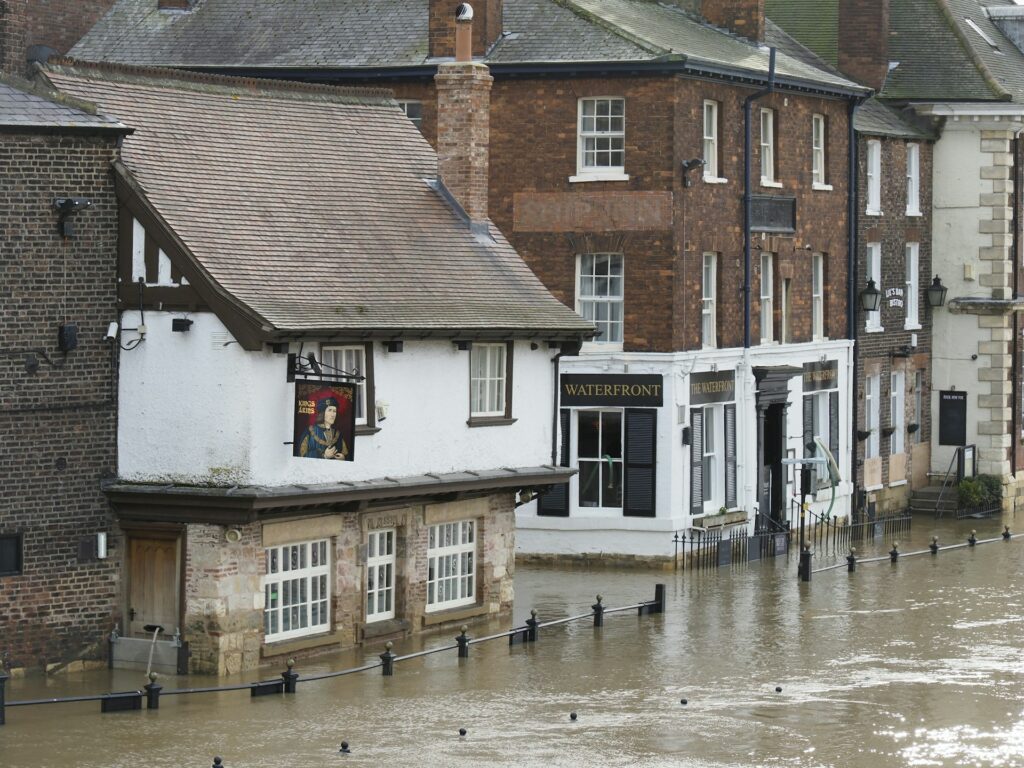The devastating floods that have struck Europe in recent years (Germany, England, France, Spain…) have exposed the increasing impact of climate change and urban development practices on natural disasters. For example, in Valencia, Spain, a recent meteorological event known as a “cold drop” led to unprecedented rainfall, resulting in significant human losses and material damages. Rising Mediterranean sea temperatures, along with unchecked urbanization of flood-prone areas, contributed heavily to this disaster. To understand the growing severity of these events, it is crucial to examine the effects of Mediterranean warming, the consequences of urbanizing high-risk areas, and strategies for adapting to these increasingly frequent and intense events that experts warn are expected to multiply.
The Effects of Warming Seas and Oceans
Climate change drives higher temperatures in seas and oceans. Valencia recently experienced record-high temperatures in the Mediterranean during summer. This phenomenon directly impacts atmospheric conditions and contributes to extreme precipitation events. For instance, as the Mediterranean warms, it releases more water vapor into the atmosphere, creating warmer, moisture-laden air ready to release intense rain when it encounters cold air masses, as seen in the recent “cold drop” that struck Valencia.
The “cold drop” phenomenon is typical of the Mediterranean region and occurs when warm, humid air from the Mediterranean meets an isolated high-altitude depression bringing cold air from the North Pole. This thermal shock produces intense rainfall, further amplified by global warming, which increases the water available in the air. During this particular event, nearly 500 liters of rain per square meter fell in just eight hours—an amount equivalent to an entire year’s precipitation—causing sudden floods and severe damage. These events are even more concerning as they tend to multiply and become more violent with rising temperatures.
Urbanization and the Vulnerability of Flood Zones
Urban development in flood-prone areas worsens the consequences of these extreme weather events. Since the 1950s and 1960s, Europe has seen rapid infrastructure growth along rivers and coastal areas, including floodplains. This development was encouraged by a sense of security built around the construction of dams and other hydraulic structures aimed at controlling floods. However, this approach has often been insufficient in the face of extreme rainfall events, as shown by recent floods.
The loss of soil permeability caused by excessive urbanization prevents the natural absorption of rainwater, intensifying floods. In natural conditions, soils and floodplains absorb much of the water, reducing the risk of rivers overflowing. However, urbanization, concreting, and the absence of natural drainage channels have increased the vulnerability of populated areas to flooding. Dams, as well as natural drainage channels, are not sufficient to contain the sudden, large volumes of water now commonly experienced, exacerbating the destruction risks in poorly planned urbanized areas. Consequently, many seemingly safe areas are suddenly vulnerable and flood-prone.
The lack of effective preventive measures for these areas, now considered flood-prone, combined with poorly planned urbanization, makes them particularly vulnerable, with dramatic consequences for both residents and infrastructure. This urban and peri-urban development model has contributed to disasters across Europe. Reassessing land management is urgently needed to limit the impacts of these floods.
Towards Essential Adaptation and Sustainable Coexistence with Nature
The recurrence of these extreme events calls for an adaptation of land management and population protection strategies. The only way to avoid recurring human and economic losses seems to be a redefinition of high-risk areas, a redesign of land use policies for these at-risk zones, and adopting climate change adaptation measures. Given the dire toll of these sudden floods, serious consideration must be given to relocating hundreds of millions of people from flood-prone areas and restoring soil’s natural water-absorbing capacities in these territories.
This approach requires investing resources to compensate residents in these areas, provide safe housing elsewhere, and redesign land sustainably, accounting for natural soil absorption capacities and flood risks. This strategy is not about admitting “defeat” to nature but rather about seeking a way to coexist in harmony with it. Nature’s force is too great to combat otherwise. Therefore, reorganizing urban spaces becomes essential to limit material damages and protect human lives in a context of climate change that continues to generate unpredictable weather conditions.
Furthermore, international cooperation could be beneficial, particularly in disaster forecasting and response. In Europe, across the various regions recently affected by flooding, awareness and prevention programs could be implemented to strengthen populations’ resilience to these events. Finally, transitioning to more resilient and environmentally friendly infrastructure, with natural flood management solutions, could help to better cope with the expected increase in extreme weather events.
Conclusion
Climate change has become a convenient excuse to obscure collective responsibilities associated with land development. For a long time, climate change was underestimated, despite the IPCC scientists warning for 30 years that these sudden heavy precipitation phenomena were entirely foreseeable. Now that the damage is done, climate change is being held responsible for everything.
However, the reality is more complex. The damage from such floods results from an explosive combination of Mediterranean warming and poorly adapted urbanization. As climate change makes extreme weather events more frequent and violent, the vulnerability of populated areas continues to grow due to a lack of adequate prevention strategies.
To limit human and economic losses, it is imperative to rethink land-use policies by adopting a sustainable approach that accounts for natural risks. Urgent adaptation is needed to coexist with nature in a context of climate upheaval, and this will require significant investments and coordination at both local and international levels.
Ksapa is working on these issues at several levels.
- Already, Ksapa is assisting various financial players in adapting their products and engagement activities with assets and customers to better factor these risks.
- Ksapa is also regularly commissioned by various players involved in financing or building major infrastructure projects to study the extent to which territorial climate and social issues are taken into account.
- In addition, Ksapa organizes and leads stakeholder engagement activities, using specific tools to ensure that the most vulnerable bangs of local communities are properly taken into account, so as to organize territorial fair-transition schemes.
- Lastly, Ksapa deploys a range of programs designed to boost local income generation, build resilience and enable local stakeholders to adapt to new local climatic conditions.
Contact us to find out more! contact@ksapa.org
Photo by Don Lodge on Unsplash copyright free
Author of several books and resources on business, sustainability and responsibility. Working with top decision makers pursuing transformational changes for their organizations, leaders and industries. Working with executives improving resilience and competitiveness of their company and products given their climate and human right business agendas. Connect with Farid Baddache on Twitter at @Fbaddache.






